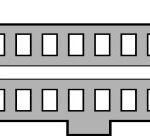Experiencing issues connecting your OBD2 scanner to your 2006 Mazda 6? A common culprit is often overlooked: a blown fuse. Before assuming a more complex problem, checking the fuses related to your OBD2 port is a simple and effective first step. This guide will walk you through identifying the correct fuses and troubleshooting potential issues to get your scanner communicating with your Mazda 6 again.
Locating the OBD2 Port and Fuse Box in Your 2006 Mazda 6
First things first, let’s pinpoint the locations of the OBD2 port and the relevant fuse box in your vehicle. The OBD2 port in a 2006 Mazda 6 is typically situated underneath the dashboard on the driver’s side. You’ll usually find it near the steering column or around the knee area.
Alt text: OBD2 port location in a 2006 Mazda 6, typically under the dashboard on the driver’s side.
The fuse box we need to access is usually located inside the cabin of your Mazda 6. Consult your owner’s manual for the precise location as it can slightly vary, but it’s often found on the driver’s side, either under the dash or behind a small panel on the side of the dashboard, accessible when the driver’s side door is open.
Identifying the Correct Fuses for Your OBD2 Port
Within the fuse box, there are two key fuses to inspect that are commonly associated with OBD2 port functionality:
- Room Fuse: This fuse powers various interior components, and it often includes the OBD2 port in its circuit. If the room fuse is blown, you might notice other interior features like your radio or interior lights also malfunctioning.
- Engine Fuse: In some Mazda 6 models, there’s a separate “Engine” fuse that also plays a role in powering the OBD2 system. This is usually a low amperage fuse (often 15 amp) located near the room fuse in the fuse box.
Refer to the fuse box diagram, usually located on the inside of the fuse box cover, to identify the exact positions of the “Room” and “Engine” fuses.
Alt text: Example of a fuse box diagram highlighting potential locations for Room and Engine fuses relevant to OBD2 function in a vehicle.
Troubleshooting Steps if Your OBD2 Scanner Isn’t Working
Once you’ve located the fuses, follow these troubleshooting steps:
- Check for Scanner Power: Plug in your OBD2 scanner and observe its power indicator, usually a red LED. It should light up as soon as it’s connected, even without the ignition being turned on. If there’s no light, the scanner isn’t receiving power.
- Inspect and Replace Fuses: Visually inspect both the Room and Engine fuses. Look for a broken wire inside the fuse. Even if they look intact, it’s best practice to replace them with new fuses of the same amperage. Fuses are inexpensive, and replacement eliminates them as a potential issue.
- Test the Connection: After replacing the fuses, try connecting your scanner again. If it still doesn’t power up, there might be a loose connection in the OBD2 port itself.
- Wiggle Test for Loose Port: With the scanner plugged in, gently wiggle the connector forward and backward, and side to side. Watch for the power LED to flicker or come on momentarily. If it does, you likely have a loose OBD2 port.
- Bluetooth/Wi-Fi Pairing (Wireless Scanners): If your scanner now has power (LED is lit) but isn’t communicating, and you’re using a wireless scanner with a phone or device, ensure Bluetooth is enabled for Android devices or Wi-Fi for iPhones and that devices are properly paired or connected according to the scanner’s instructions.
Conclusion
Checking the “06 Mazda 6 Obd2 Fuse,” specifically the Room and Engine fuses, is a quick and simple diagnostic step when facing OBD2 scanner connection problems. Often, a blown fuse is the only issue, saving you time and potential repair costs. If replacing these fuses doesn’t resolve the problem, further investigation into the OBD2 port itself or scanner compatibility might be necessary. Remember to always consult your Mazda 6 owner’s manual for specific fuse locations and diagrams.
